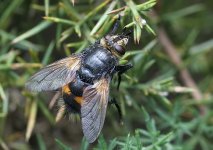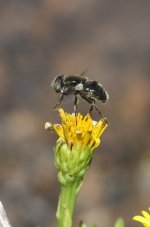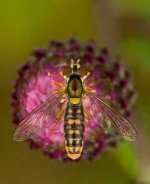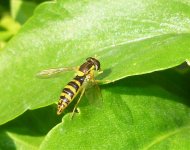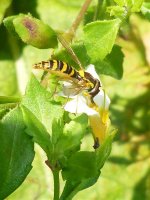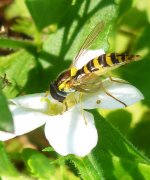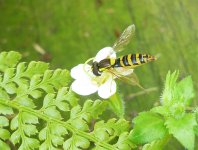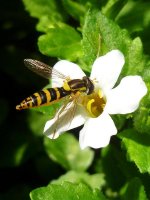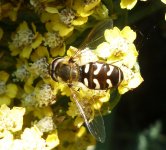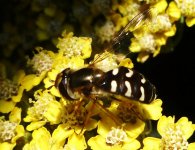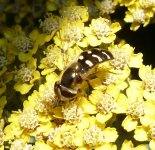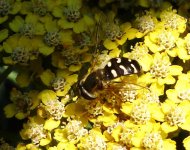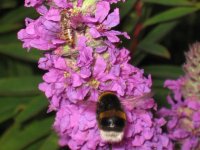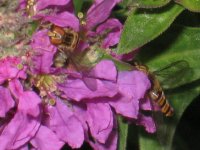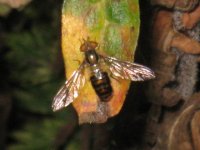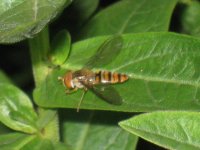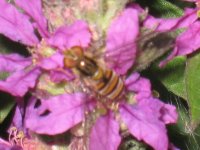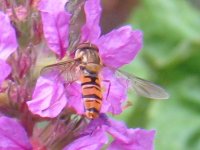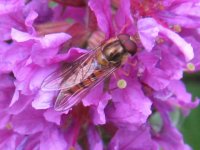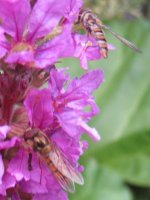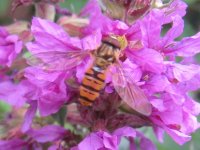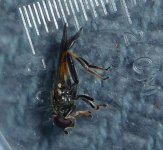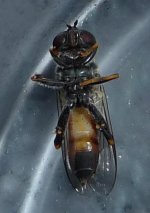-
Welcome to BirdForum, the internet's largest birding community with thousands of members from all over the world. The forums are dedicated to wild birds, birding, binoculars and equipment and all that goes with it.
Please register for an account to take part in the discussions in the forum, post your pictures in the gallery and more.
You are using an out of date browser. It may not display this or other websites correctly.
You should upgrade or use an alternative browser.
You should upgrade or use an alternative browser.
The Hoverfly Thread (11 Viewers)
- Thread starter Brian Stone
- Start date
More options
Who Replied?Brian Stone
A Stone chatting
Not a hover, a tachinid fly I think. Don't know the species, sorry.
Jan-Paul Charteris
Sussex birder and budding moth enthusiast
Just wondering if anyone with better hoverfly knowledge could help with these? :t:
http://www.birdforum.net/showthread.php?t=206369
Jan
http://www.birdforum.net/showthread.php?t=206369
Jan
Hey hoverfly experts, I was wondering if you knew of any GIANT species in the UK? 3 years ago in the Highlands I cam across this huge fly, about 5 or six centimetres long, and very hairy, and when it flew it sort of hovered a bit. It was brown and yellow. The flight looked hovery, but the head of the fly looked more like something else, like a robberfly
This has been bugging me for three years can some one help?
Thanks
This has been bugging me for three years can some one help?
Thanks
Leif G
Well-known member
Unidentified Sphaerophoria (?)
This female was photographed near the coast in South west Norway, July 14th.
I would say it belongs to the genus Sphaerophoria. Small.
I've been looking through both volumes of Nationalnyckeln (the Swedish two volume guide to the Nordic hoverflies). But no luck. I'm not able to find any hoverfly having this pattern on the abdomen.
Hopefully someone here have some suggestions.
If I get it solved through other channels I'll post it here.
Thanks!
This female was photographed near the coast in South west Norway, July 14th.
I would say it belongs to the genus Sphaerophoria. Small.
I've been looking through both volumes of Nationalnyckeln (the Swedish two volume guide to the Nordic hoverflies). But no luck. I'm not able to find any hoverfly having this pattern on the abdomen.
Hopefully someone here have some suggestions.
If I get it solved through other channels I'll post it here.
Thanks!
Attachments
Jan-Paul Charteris
Sussex birder and budding moth enthusiast
Can this hoverfly be identified from the photos?
I photographed this in my garden earlier today. All 5 photos relate to the same individual. Is it possible to identify it to species from these photos?
Should add, this was in Portslade in Sussex
I photographed this in my garden earlier today. All 5 photos relate to the same individual. Is it possible to identify it to species from these photos?
Should add, this was in Portslade in Sussex
Attachments
I photographed this in my garden earlier today. All 5 photos relate to the same individual. Is it possible to identify it to species from these photos?
Should add, this was in Portslade in Sussex
Sphaerophoria sp.
Jan-Paul Charteris
Sussex birder and budding moth enthusiast
Cheers aeshna :t:
Jan-Paul Charteris
Sussex birder and budding moth enthusiast
Matt Prince
Sharkbait
Yes it is indeed Scaeva Pyrastri - nice distinctive hover that one.
Jan-Paul Charteris
Sussex birder and budding moth enthusiast
Cheers Matt :t:
Bonsaibirder
http://mobro.co/saddinall
I live on the coast in County Durham and today there was a huge increase in the numbers of hoverflies.
I have no knowledge at all about hoverflies and so I wanted to ask - are these migrants or a mass hatching, or some other phenomenon? Although I know nothing about them, I do love seeing hoverflies and so I take notice when I see them. I have never seen so many as I did today, not even close!
I tried to photograph some and one species seems to predominate. However there might be up to three different species?
I have no knowledge at all about hoverflies and so I wanted to ask - are these migrants or a mass hatching, or some other phenomenon? Although I know nothing about them, I do love seeing hoverflies and so I take notice when I see them. I have never seen so many as I did today, not even close!
I tried to photograph some and one species seems to predominate. However there might be up to three different species?
Attachments
Bonsaibirder
http://mobro.co/saddinall
... and a few more photos
It seems to me that the dark one (3rd picture on the first post) and the last picture on this posting might be different from the rest?
It seems to me that the dark one (3rd picture on the first post) and the last picture on this posting might be different from the rest?
Attachments
Last edited:
Matt Prince
Sharkbait
They all look like episyrphus balteatus (marmalade fly) to me even the 3rd one from your first post, though I've never seen one that dark before. The extent of the markings and depth of colour vary a lot, but maybe one of the more experienced hands could confirm my hunch that #3 is an extreme e. balteatus - if so that's a cracker of an individual in its own right.
Matt Prince
Sharkbait
Here's one from a moth trapping event at Offwell wood. Picture taken after a night in the cold cell (aka the fridge).
Keyed out as female xylota segnis.
I thought the cold of the fridge had done for it - but, despite appearances it flew off three minutes later !
Keyed out as female xylota segnis.
I thought the cold of the fridge had done for it - but, despite appearances it flew off three minutes later !
Attachments
Bonsaibirder
http://mobro.co/saddinall
Thanks Matt :t:
Any idea why the large influx?
Any idea why the large influx?
Users who are viewing this thread
Total: 12 (members: 0, guests: 12)




